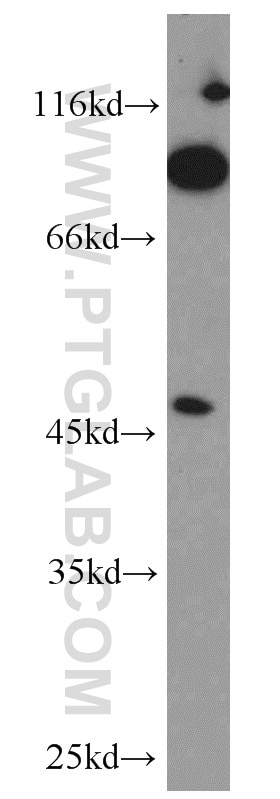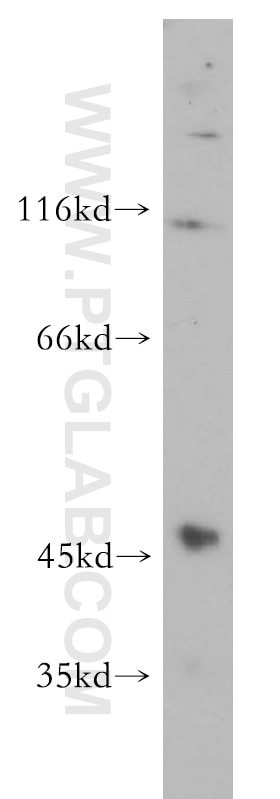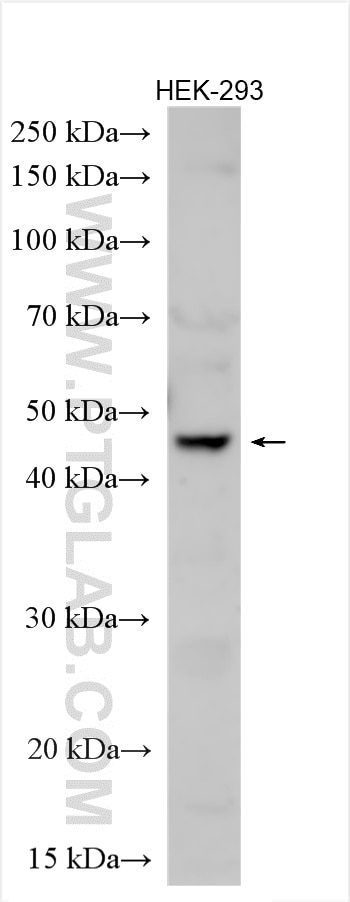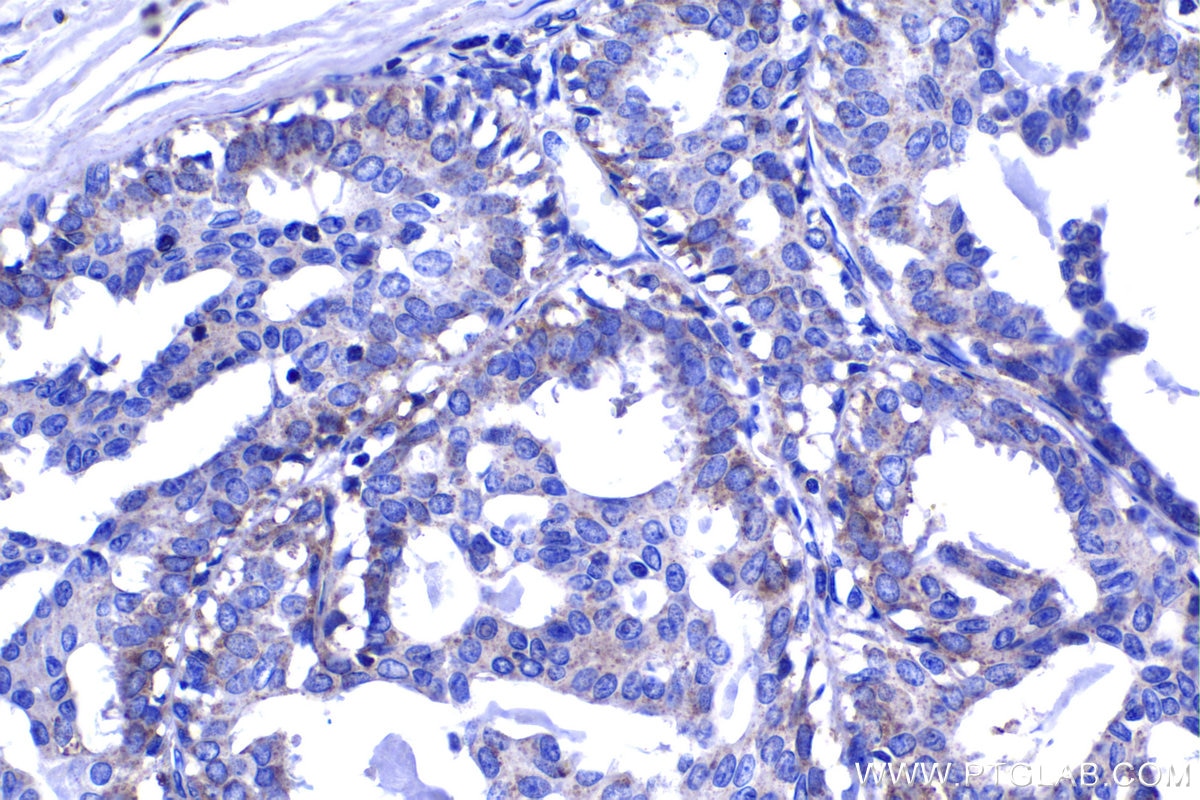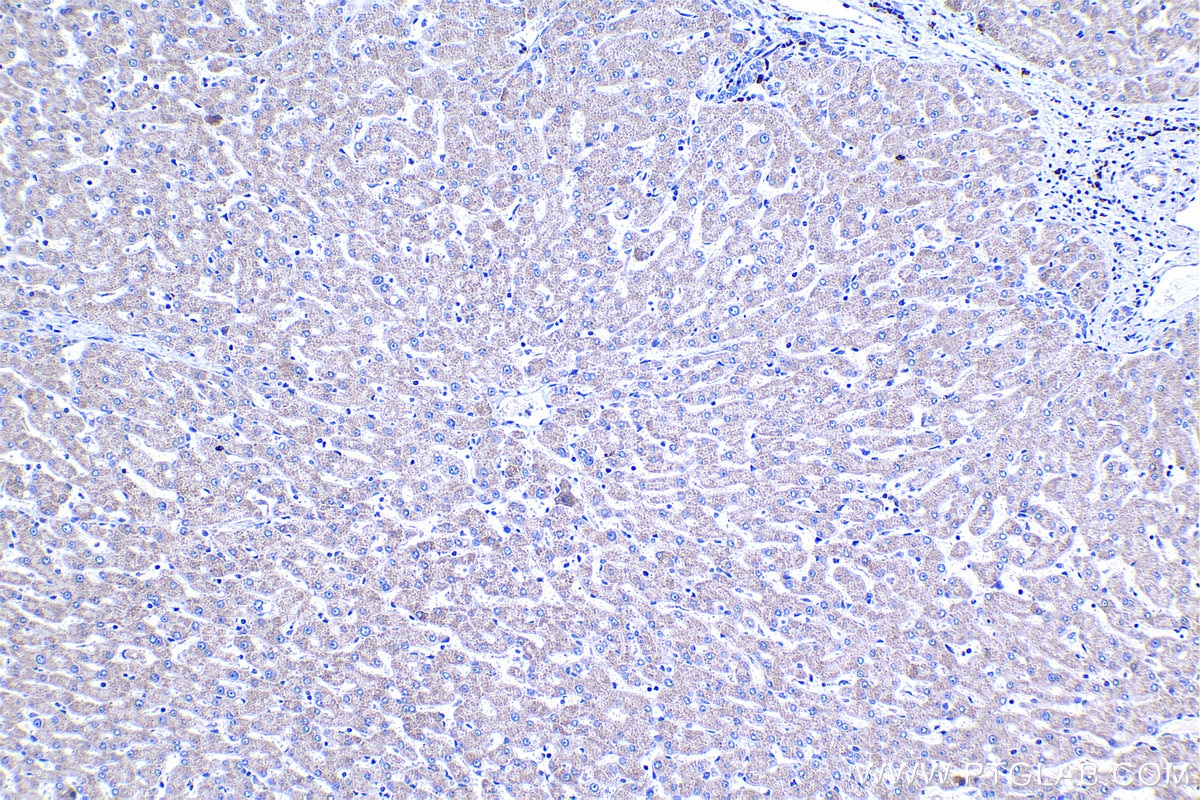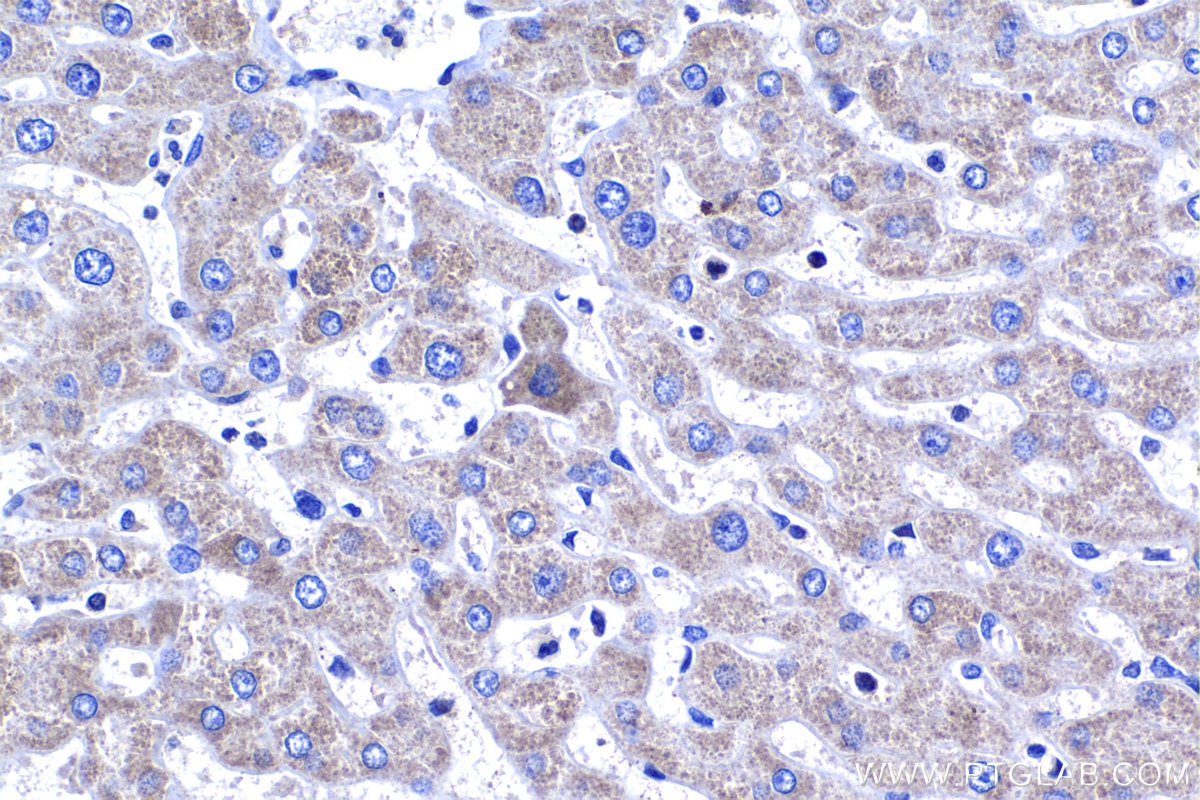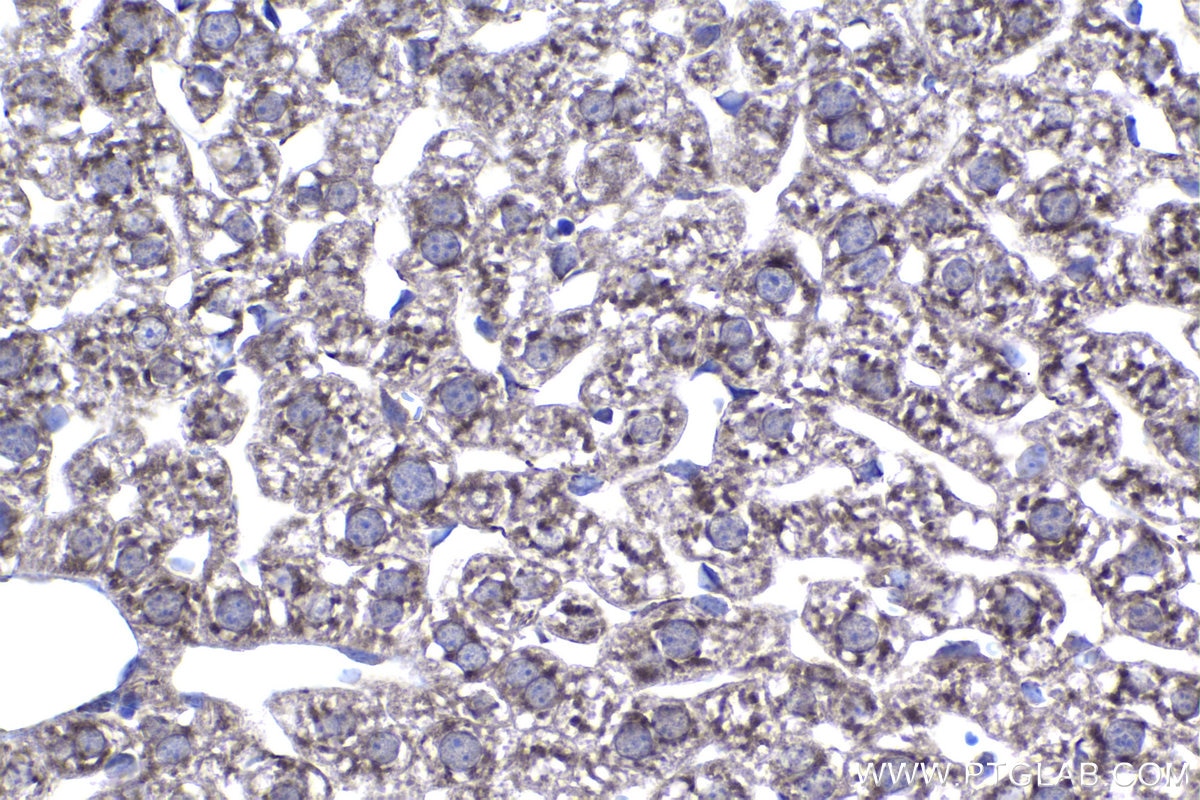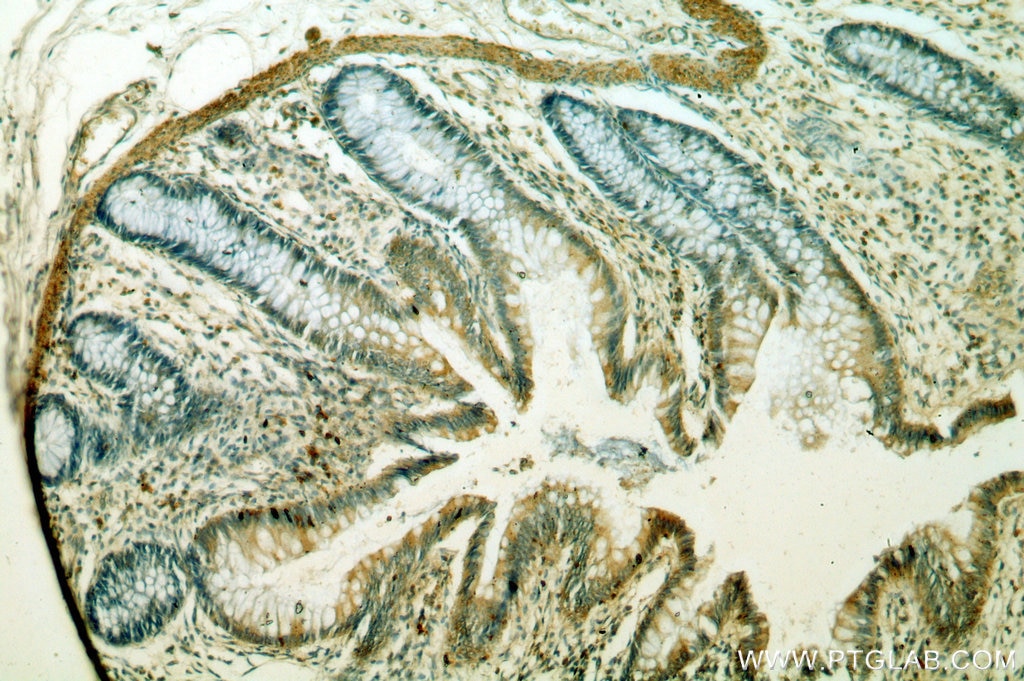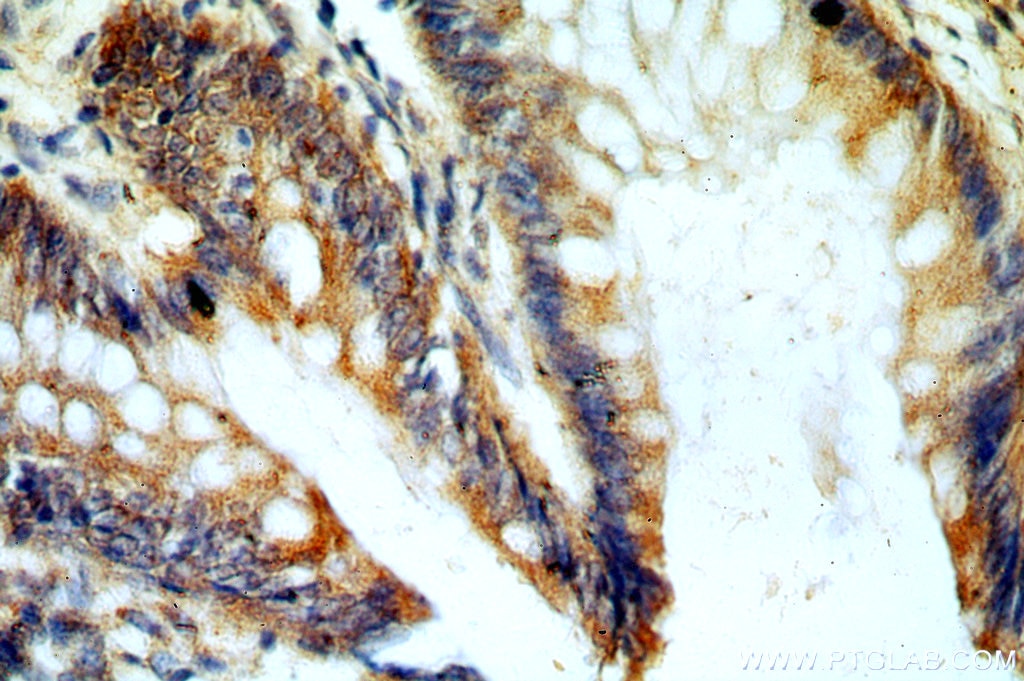Validation Data Gallery
Tested Applications
| Positive WB detected in | mouse kidney tissue, HEK-293 cells |
| Positive IP detected in | HEK-293 cells |
| Positive IHC detected in | human liver tissue, human colon tissue, human breast cancer tissue, mouse liver tissue Note: suggested antigen retrieval with TE buffer pH 9.0; (*) Alternatively, antigen retrieval may be performed with citrate buffer pH 6.0 |
Recommended dilution
| Application | Dilution |
|---|---|
| Western Blot (WB) | WB : 1:500-1:1000 |
| Immunoprecipitation (IP) | IP : 0.5-4.0 ug for 1.0-3.0 mg of total protein lysate |
| Immunohistochemistry (IHC) | IHC : 1:50-1:500 |
| It is recommended that this reagent should be titrated in each testing system to obtain optimal results. | |
| Sample-dependent, Check data in validation data gallery. | |
Published Applications
| KD/KO | See 1 publications below |
| WB | See 2 publications below |
Product Information
18118-1-AP targets GCNT2 in WB, IHC, IP, ELISA applications and shows reactivity with human, mouse, rat samples.
| Tested Reactivity | human, mouse, rat |
| Cited Reactivity | human |
| Host / Isotype | Rabbit / IgG |
| Class | Polyclonal |
| Type | Antibody |
| Immunogen |
CatNo: Ag12635 Product name: Recombinant human GCNT2 protein Source: e coli.-derived, PET28a Tag: 6*His Domain: 29-400 aa of BC074801 Sequence: GDPSFQRLNISDPLRLTQVCTSFINGKTRFLWKNKLMIHEKSSCKEYLTQSHYITAPLSKEEADFPLAYIMVIHHHFDTFARLFRAIYMPQNIYCVHVDEKATTEFKDAVEQLLSCFPNAFLASKMEPVVYGGISRLQADLNCIRDLSAFEVSWKYVINTCGQDFPLKTNKEIVQYLKGFKGKNITPGVLPPAHAIGRTKYVHQEHLGKELSYVIRTTALKPPPPHNLTIYFGSAYVALSREFANFVLHDPRAVDLLQWSKDTFSPDEHFWVTLNRIPGVPGSMPNASWTGNLRAIKWSDMEDRHGGCHGHYVHGICIYGNGDLKWLVNSPSLFANKFELNTYPLTVECLELRHRERTLNQSETAIQPSWYF 相同性解析による交差性が予測される生物種 |
| Full Name | glucosaminyl (N-acetyl) transferase 2, I-branching enzyme (I blood group) |
| Calculated molecular weight | 400 aa, 46 kDa |
| Observed molecular weight | 46 kDa |
| GenBank accession number | BC074801 |
| Gene Symbol | GCNT2 |
| Gene ID (NCBI) | 2651 |
| RRID | AB_2232115 |
| Conjugate | Unconjugated |
| Form | |
| Form | Liquid |
| Purification Method | Antigen affinity purification |
| UNIPROT ID | Q8N0V5 |
| Storage Buffer | PBS with 0.02% sodium azide and 50% glycerol{{ptg:BufferTemp}}7.3 |
| Storage Conditions | Store at -20°C. Stable for one year after shipment. Aliquoting is unnecessary for -20oC storage. |
Background Information
GCNT2 (N-acetyllactosaminide beta-1,6-N-acetylglucosaminyl-transferase) catalyzes the transfer of N-acetylglucosamine to the carbon-6 position of galactose. The loss of GCNT2 expression and corresponding loss of I-antigen in melanoma cells has profound effects on key oncogenic signaling pathways, including integrin-mediated signaling pathways critical for metastasis (PMID: 33660254, 30135430). Alterations in GCNT2 expression have now been associated with multiple malignancies, with high GCNT2 promoting tumor progression in a majority of investigated cancers. Three GCNT2 splicing variants GCNT2A, -B, and -C, which differ at exon 1 but have identical exon 2 and 3 coding regions, are expressed differentially in specific tissues (PMID: 15161861). GCNT2C determines the expression of the blood group I antigen in erythrocytes.
Protocols
| Product Specific Protocols | |
|---|---|
| IHC protocol for GCNT2 antibody 18118-1-AP | Download protocol |
| WB protocol for GCNT2 antibody 18118-1-AP | Download protocol |
| Standard Protocols | |
|---|---|
| Click here to view our Standard Protocols |
Publications
| Species | Application | Title |
|---|---|---|
Glycobiology MeCP2 regulated glycogenes contribute to proliferation and apoptosis of gastric cancer cells. | ||
Cell Biochem Biophys Long Non-Coding RNA PCAT19 Suppresses Cell Proliferation and Angiogenesis in Coronary Artery Disease through Interaction with GCNT2
|

